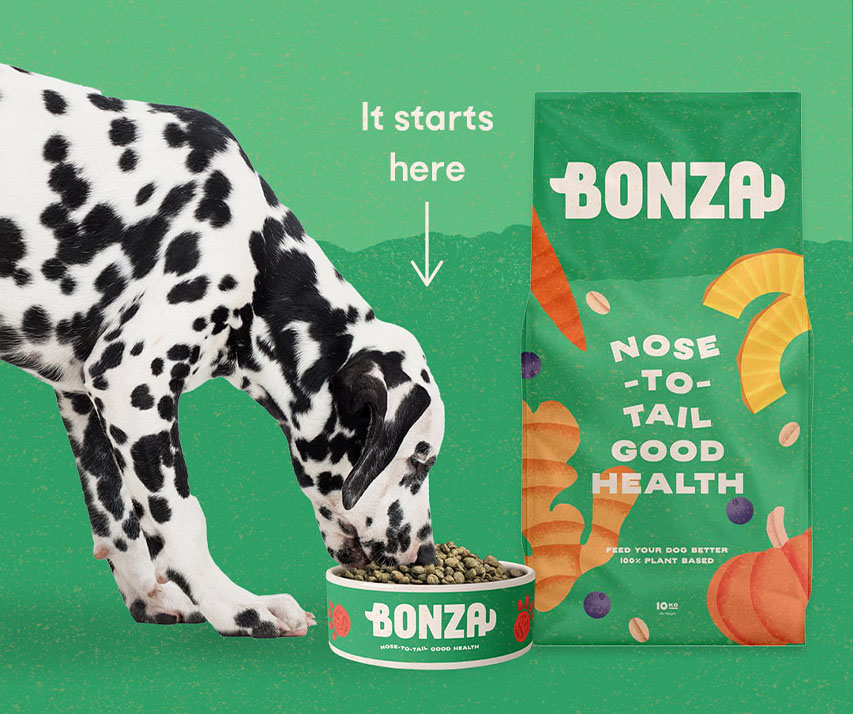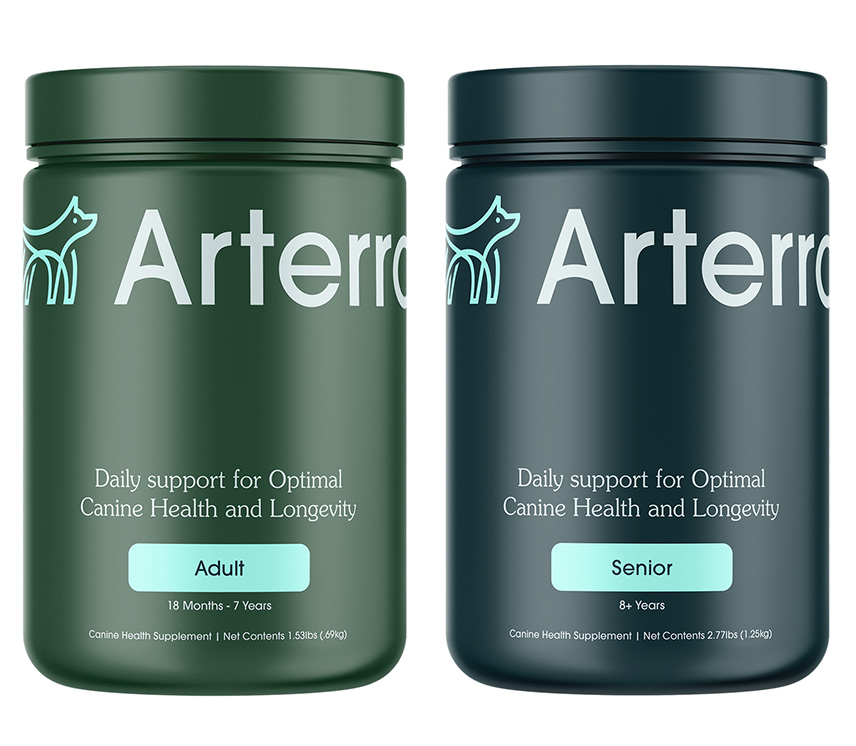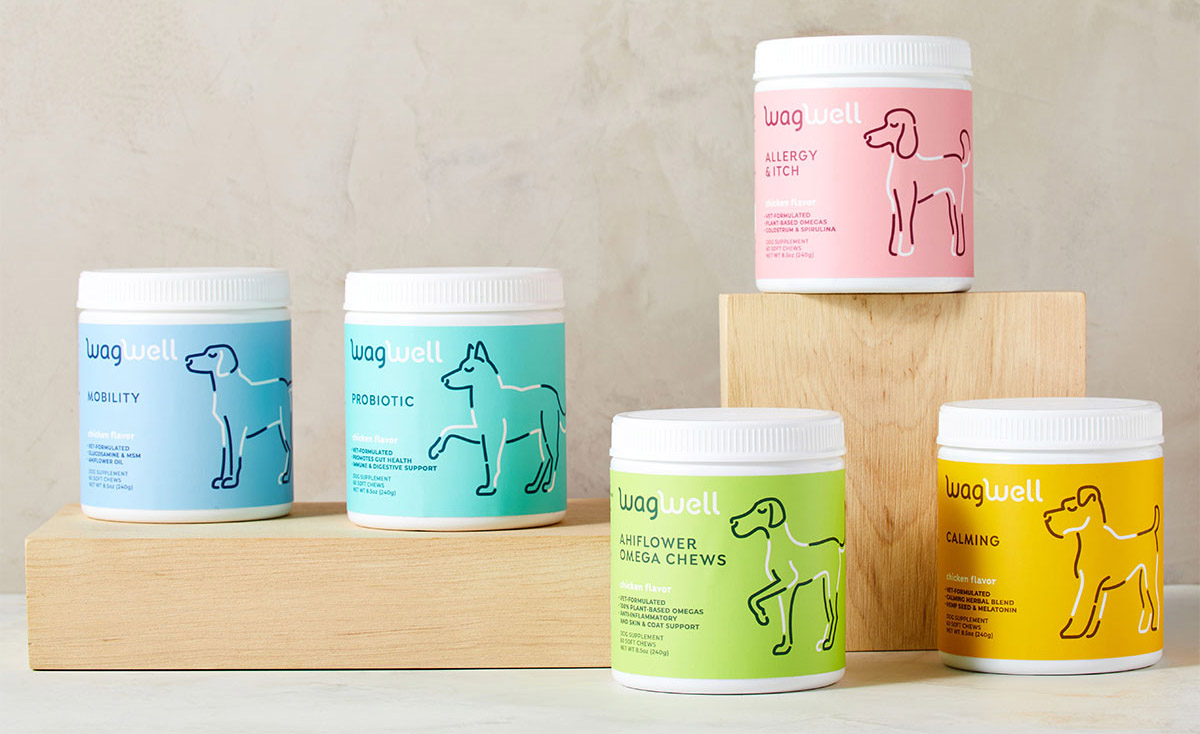This article was published in the March 2024 issue of Pet Food Processing. Read it and other articles from this issue in our March digital edition.
The term nutraceutical was introduced to the human food industry in 1989 by US medical doctor Stephen DeFelice, who defined it as “food, or parts of a food, that provide medical or health benefits, including the prevention and treatment of disease.” Sometimes these products are federally regulated as dietary supplements, even though they resemble a food, rather than a capsule or tablet. This enables the marketer to make allowed structure-function claims and approved health claims. And now, with the humanization of pets in full force, the pet food industry is using the term, too.
While the term nutraceutical is not typically used on product packaging or in marketing materials, it remains part of the industry’s vernacular when referring to the notion of using food for both nutritional and medicinal purposes. And for many pet parents, the idea of foods and treats being the delivery vehicle of health benefits is appealing.
“It is critical for brands to understand what pet parents are looking for in a pet supplement and how they look for it,” said Jon Copeland, research manager, MarketPlace, St. Louis. “According to a recent survey conducted by MarketPlace of US pet supplement consumers, 62% look for a specific benefit. They’re also talking to friends and family and doing their own online research.”
As an online pet food, treat and supplement distributor, Plantation, Fla.-based Chewy is keeping its finger on the pulse of product trends to ensure it is offering pet parents the products they’re seeking.

Bonza includes the herb ashwagandha in its vegan dog kibble. According to the company, the benefits of the ingredient include increased energy, better sleep and lower blood sugar levels.
|“There are trends that started in 2023 that I think are going to gain traction in 2024, like functional foods,” said Paul Hunt, vice president of private brands, Chewy. “What’s critical is that we know our customers, the benefits they want, and where we are in the customer journey. It’s really important to not jump or skip a step. If you don’t bring your customers along, you’re going to end up with a great product, but no one’s really going to know what it is.”
Seeking benefits
It is important to note that many nutraceuticals are not formally approved by the Association of American Feed Control Officials (AAFCO), which is an independent organization working closely with regulators to oversee pet foods and treats, including ingredient definitions and label standards. However, there are many nutraceuticals included in these products. When the benefits are noticeable to the pet parents, the word spreads fast.
Outside of vitamins and minerals, the most common nutraceuticals in pet focus on joint health and digestive health, according to Jason Shelton, vice president, research and development, Kemin Nutrisurance, Des Moines, Iowa. Some of the common nutraceuticals for joint health are glucosamine, chondroitin and different anti-inflammatory products. There are a variety of nutraceuticals for digestive health, but most of them fall under the probiotic, prebiotic and phytogenic platforms.
“As we look to the future, we at Kemin believe that more products will be developed around cognition and providing a direct or indirect impact on the gut microbiome, including new categories such as postbiotics,” Shelton said.
The MarketPlace survey showed that 55% of US pet supplement consumers would consider purchasing pet health products with aloe vera and 50% would consider products containing ginger root. Additionally, 47% would consider products with green tea extract and 37% would consider products with ashwagandha.

Recent-to-the-market supplement brand Arterra leverages several nutraceuticals, including collagen, ashwagandha, cordyceps and turmeric, to provide a litany of health benefits.
|“Ashwagandha is an incredibly powerful medicinal herb,” said Glendon Lloyd, chief executive officer, Bonza, Norwich, United Kingdom.
The company includes the herb in its namesake vegan dog kibble marketed as being made with superfoods and ancient grains.
“Ashwagandha is an adaptogenic herb that helps the body adapt to fight the effects of stress, including the stress hormone cortisol, which has been implicated in numerous health issues,” Lloyd added. “Ashwagandha provides all sorts of benefits to a dog’s body and brain including increased energy, better sleep, less fatigue, lower blood sugar levels, promotes healthy lipid profiles, and helps fight symptoms of anxiety and depression.”
Ashwagandha has been used by ayurvedic practitioners for more than 3,000 years and it’s one of the most popular nutraceuticals in functional beverages and bars for humans. So, the theory exists that “what’s good for me must be good for my pet.”
The same is true with healthful fats.
“Omega 3, 6 and 9 fatty acids offer cellular nutrition to deliver reduced inflammation, increased mobility, skin and coat health, cardiovascular health, increased blood flow, decreased hypoxia and mitochondria health,” said Will Billings, chief executive officer, PuraVet Pet, Burlington, Vt.
Lloyd added, “Coconut oil is high in healthy fats called medium chain triglycerides. It is also high in healthy saturated fats that have different effects than most other fats in your dog’s diet. These fats can boost fat burning and provide your dog’s body and brain with quick energy. They also raise the good cholesterol in their blood, which is linked to reduced heart disease risk.”
Supporting claims
As with humans, marketers often turn to structure-function claims to communicate purported benefits, such as “supports a healthy coat.” Direct callouts of the nutraceutical and its inclusion level are also common. In this case, the pet parent is usually aware of the benefits and is seeking foods containing the specific ingredient.
Many nutraceuticals are added in small quantities. They are often blended together with an inert carrier and added to the food formulation in what is called a “premix.” Premixes simplify the manufacturing process and reduce error at the manufacturing facility.
“Premixes are a combination of individual ingredients that, when expertly formulated by a certified animal nutritionist, deliver synergistic benefits,” Billings said. “They also allow for a greater variety of harmonious ingredients per condition-specific formulation.”
“Different nutraceuticals address health challenges by different modes of actions,” said Jason Shelton, Kemin Nutrisurance.
Shelton added, “Different nutraceuticals address health challenges by different modes of actions. In some cases, the combination of multiple smaller effects can result in a more remarkable health benefit. Combining these together into one diet allows for a more broad-spectrum approach to pet health.”
A premix also allows for one addition into the pet food instead of handling each individual mineral. This reduces purchasing, inventory and manufacturing complexity.
“Care must be taken that each ingredient contained in the premix is at efficacious levels and not just ‘window dressing’ marketing,” Billings said.
Shelton said, “Some challenges in formulating with nutraceuticals include demonstrating efficacy, ensuring nutraceuticals make it to the right place in the animal, maintaining palatability, and limiting unintended interactions.
“To be the most efficacious, nutraceuticals must be delivered to the right place in the digestive tract and in a form that is bioactive,” he added. “When incorporated into a pet food or treat, nutraceuticals have to make it through both high-heat processing of the diet as well as pH changes in the animal’s digestive tract.”
The foremost challenge is demonstrating efficacy within the complex biology of pets. Providing evidence of a benefit can take months or years.
“Finding companion animals that fit the criteria and can participate in a study that long is challenging,” Shelton said. “And with studies performed outside of a laboratory setting, there are often many confounding factors that can affect study results, such as other health issues, compliance by pets and their owners, and the placebo effect. To overcome these obstacles, it takes creative protocol designs, careful planning, recruitment of participants, and collaboration with great partners.”
To assist in this space, Kemin developed in-vitro (in lab) models that can predict the impact of the nutraceutical before feeding it to the pet. But, of course, if the pet won’t eat it, then there is no benefit.
“At Kemin, palatability trials are always conducted early in testing to ensure adequate consumption by the animals,” Shelton said. “Just as we do with our own health, we have to make sure these ingredients do not have any unintended interactions with other parts of a pet food diet. We overcome this challenge with focused in-vitro lab studies before we feed it to pets.”
Recent innovations
Typical pet food manufacturing processes can be harsh and could limit the efficacy and stability of some nutraceuticals. New and novel ingredients can also face palatability challenges.
“Over the past 35 years, our team of pet experts have worked with pet food manufacturers to perfect the postbiotic technology behind our solutions,” said Chad Wethal, senior global marketing manager of pet, lifestyle and aqua, Cargill, Minneapolis. “This work has yielded solutions that are palatable for dogs and cats and, importantly, experience has shown that they retain efficacy through typical pet food manufacturing processes, such as retort, extrusion and high-pressure, enabling them to deliver their intended health benefits when used in any pet food formula.”
Cargill’s postbiotic pet food ingredients are backed by a dozen pet-specific studies showing the postbiotics can support several trending health benefits. This includes digestive health, a healthy gut microbiome, balanced immunity, vitality and even breath freshness.

Dog wellness brand WagWell offers supplements made using a proprietary blend of Ahiflower, a plant-based source of Omega 3, 6 and 9 fatty acids.
| WagWellDog wellness brand WagWell, Charlotte, NC, now offers an assortment of chewable supplements made using a proprietary blend of Ahiflower, a plant-based source of Omega 3, 6 and 9 fatty acids that is a sustainable alternative to fish oils. According to the brand, Ahiflower is non-GMO and clinically proven to help improve skin, coat and joint health in dogs.
“Although Ahiflower oil is an ingredient already proven in the equine space, given its limited knowledge today in the general pet industry, there’s an element of education required for the end consumer to raise awareness around its effectiveness,” said William Smolen, founder and chief executive officer of WagWell. “We aim to continue to move the needle with efficacy and sustainability practices in pet wellness by shedding light on the power of Ahiflower oil as both an effective source of Omega 3, 6 and 9, and aid in the effort to reduce overfishing.”
Overfishing is leading to a significant overall cost increase in fish oils, as many have become four times more expensive over the past two years, according to Smolen.
“One bottle of our Ahiflower Omega oil is equivalent to 600 fish in the ocean,” he said. “And for the dog, we’re able to prove the benefit of the use of Ahiflower oil through improved skin, joint and coat health without contributing to bad breath and unwanted fishy smells.”
Natures Crops International’s primary Ahiflower ingredient in pet supplementation comes from a new plant species called Buglossoides arvensis. This is a native weed species that is now being cultivated in the United Kingdom using regenerative agricultural practices.
“Its seeds produce an oil with exceptionally high Omega 3 content and is used increasingly to replace fish and flax seed oils in various pet supplements,” said Andrew Hebard, chief executive officer and founder of the Winston-Salem, NC-based company. “Being a natural plant oil with a higher total omega content than any other source, the health benefits include skin and coat health, joint health and inflammation management, post-exercise recovery and gut health. In virtually all pet species, Omega 3s are essential ingredients for all-round health, wellness and vitality, so having a new and versatile ingredient in so many applications allows for many delivery formats and formulations.”

The oil produced from Ahiflower seeds contains a high level of Omega 3s and can be used to replace fish and flax seed oils in pet supplements.
| Source: Natures Crops InternationalThe oil contains gamma linolenic acid, an anti-inflammatory Omega 6 fatty acid that is often recommended for skin and coat health. Buglossoides seeds also possess unique compounds associated with canine dental health.
“Buglossoides oil and seeds are really quite easy and versatile ingredients to formulate with,” Hebard said. “Efficacy is validated through many clinical trials, but one of the overriding messages we receive through testimonials is how quickly and visibly owners are seeing results.”
The company has not seen any negative ingredient interactions, and sensory and shelf-life characteristics are better than those seen in marine and algal oils. From an economics perspective, pricing is highly competitive, and the constrained supply chain for fish oil is creating many challenges. Products containing the Ahiflower ingredient are expected to start rolling out in the latter part of 2024.
“This seed oil has an incredibly robust and risk-mitigated supply chain, so its traceability and reliability are major positives,” Hebard said.
There are many more well-documented nutraceuticals with benefits for pets. Some of have been around since ancient times, whereas others are just beginning to emerge. Lloyd believes the industry is in its infancy and that there are many challenges to be overcome.
“The economics of inclusion poses the greatest challenge,” he said. “Many of these nutraceutical ingredients are uncommon and relatively expensive. As inclusion rates for efficacy are low, balancing the costs and maintaining acceptable pricing for consumers can be challenging.
“I believe that as human understanding of the benefits of nutraceuticals grows, and supplementation of human diets increases for health reasons, so will the inclusion of nutraceuticals in pet diets increase,” Lloyd concluded.
Read more about product development, ingredients and formulation.



